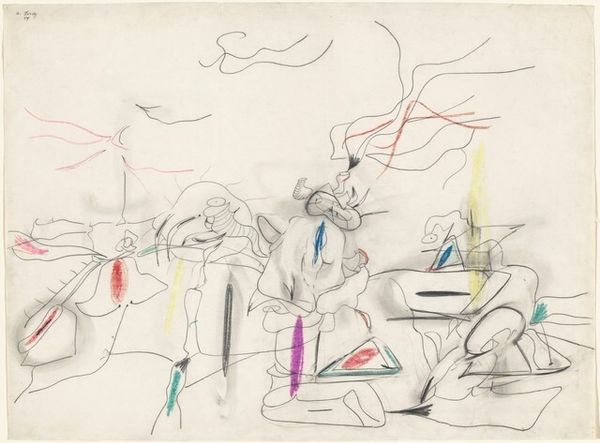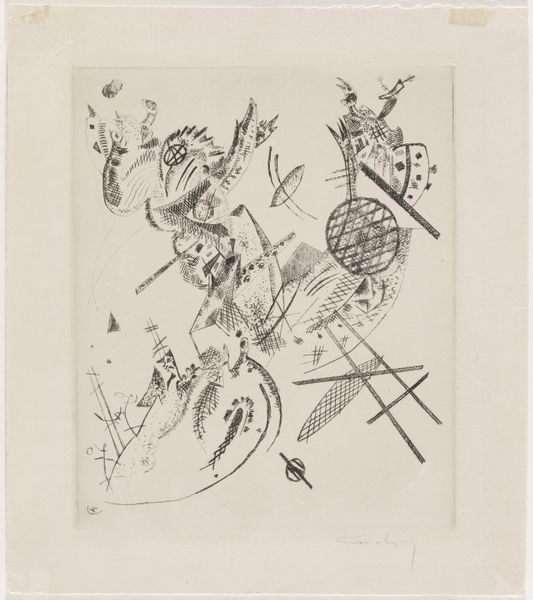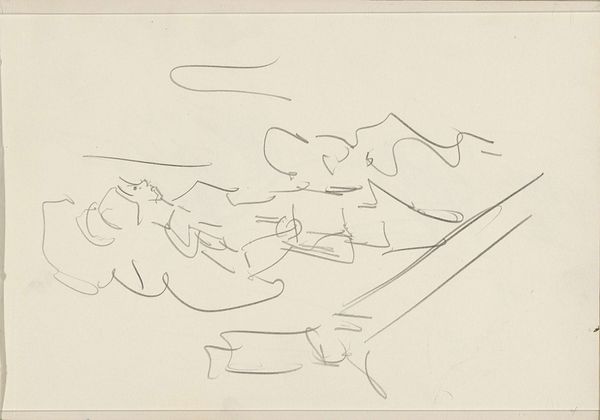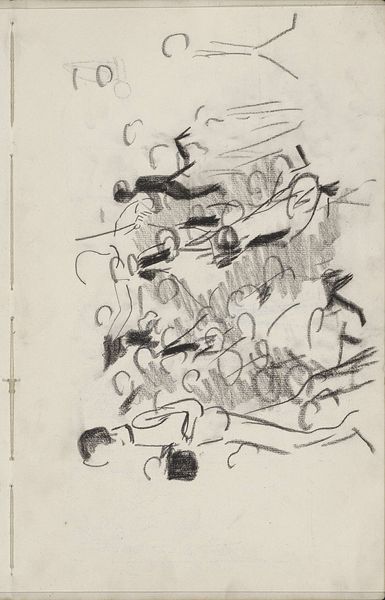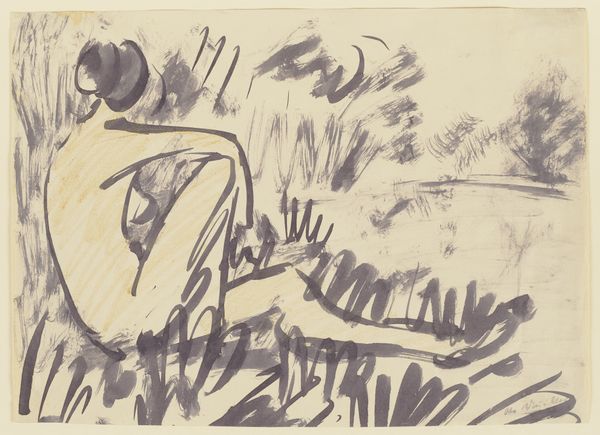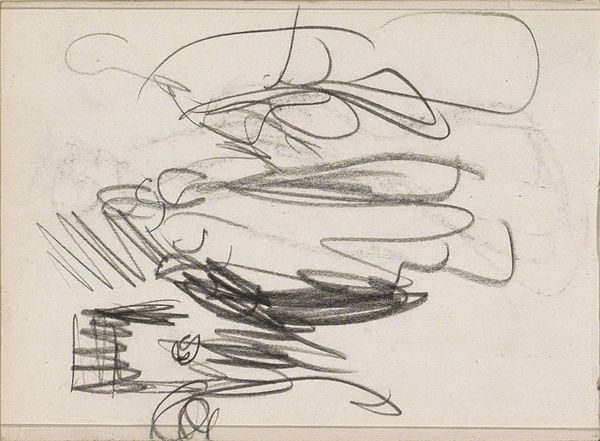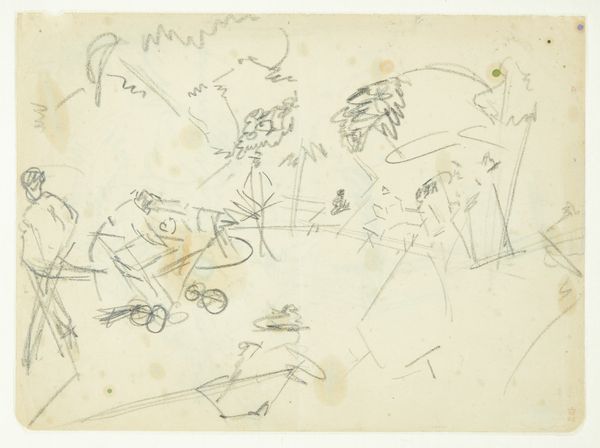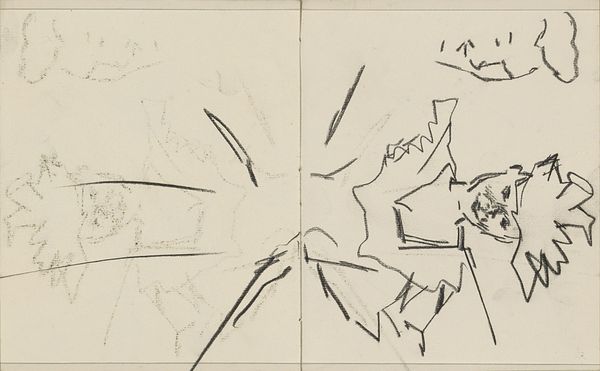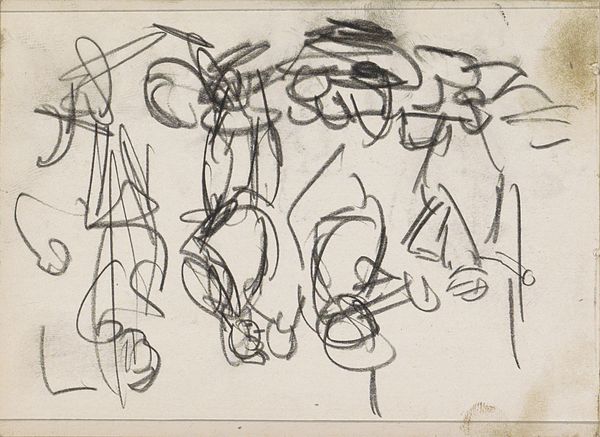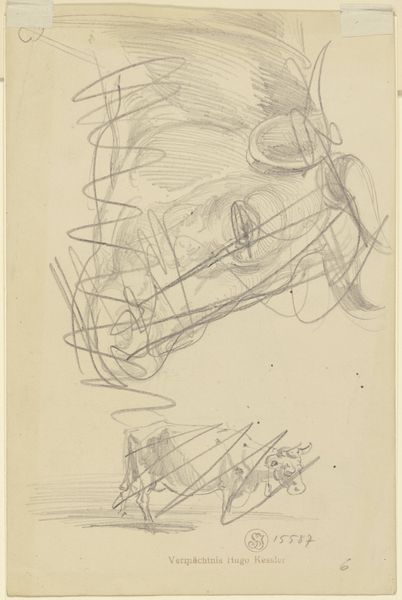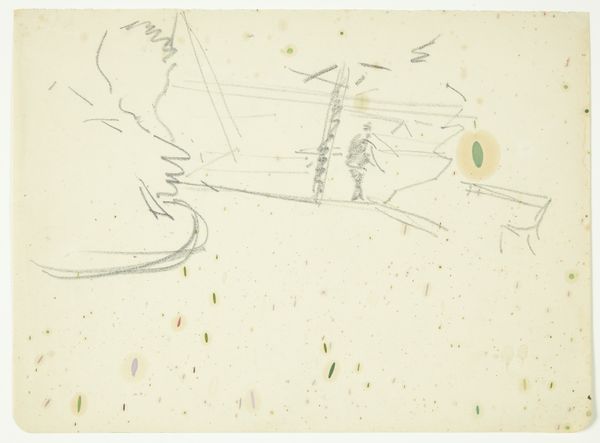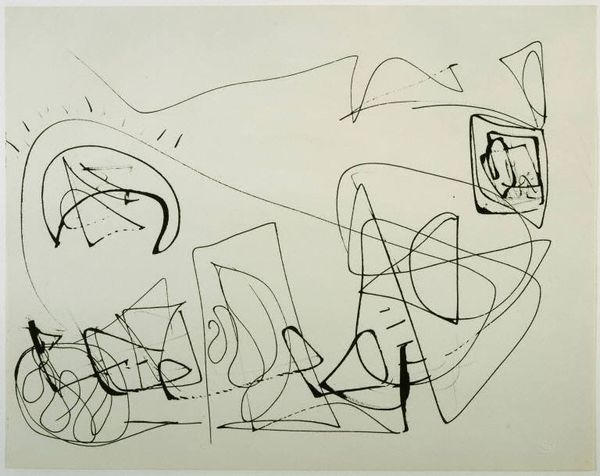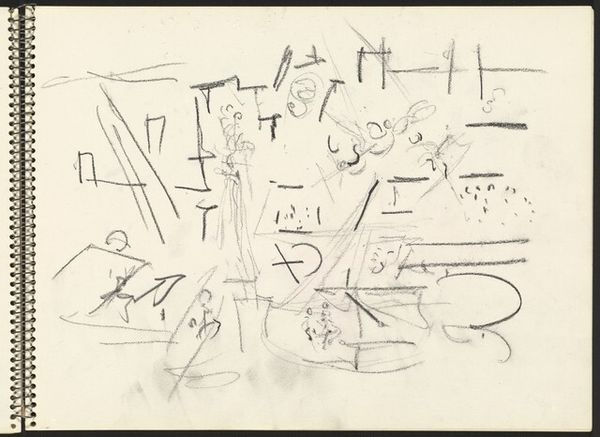
drawing, paper, pencil
#
drawing
#
paper
#
pencil
#
abstraction
#
modernism
Dimensions: 225 mm (height) x 313 mm (width) (bladmaal)
Curator: This is “Kompositionsstudie til Langelinje-billedet”, a compositional study by Edvard Weie, made between 1923 and 1927. It’s a pencil drawing on paper and it’s held here at the SMK, Statens Museum for Kunst. Editor: It looks like the chaotic first marks of a composition, raw and unresolved. So much energy in what appears to be a fleeting moment captured on paper. Curator: Well, sketches like this give us access to Weie's creative process, don't they? It reveals his engagement with abstraction. Pencil on paper allows for immediate expression, but the choice to refine it over several years suggests something beyond immediacy at play. Editor: Yes, it brings forward that tension between impulsive mark-making and thoughtful construction. The period from 1923 to 1927 saw increasing anxieties surrounding Danish identity, given rising fascism in Europe. How might such social and political contexts impact Weie's abstraction in representing a popular site like Langelinje? Curator: Abstraction allows the artist to detach from mimetic representation. The labor involved, moving pencil repeatedly across the paper's surface, hints at the meticulous labor disguised within Weie's final paintings, so far from any suggestion of work or even material process. Editor: Labor also manifests conceptually—how does he reimagine spatial representation and traditional figure placement in art? What commentary is made by presenting only abstracted, ghost-like figures against the recognizable Langelinje backdrop? I suspect it’s less about aesthetics, and more about a shifting societal gaze. Curator: That's an intriguing point, connecting abstraction with broader shifts in cultural and political perspective. For me, the value of a drawing like this resides less in overt societal critique, and more in demonstrating an aesthetic construction. Editor: But aren't aesthetics inherently tied to cultural contexts and even politics? Curator: Perhaps. And in its deceptively simple construction lies a story about artmaking and intention. Editor: Ultimately, perhaps by embracing art's messy foundations, we get to have complex conversations. Curator: And the means of making and materials shape the way in which stories like this are shared.
Comments
No comments
Be the first to comment and join the conversation on the ultimate creative platform.
